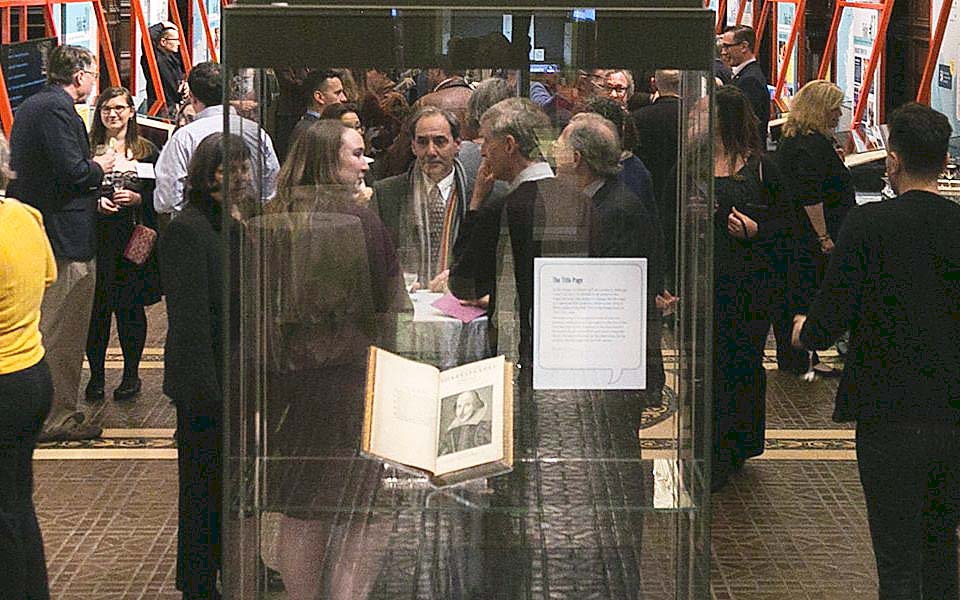#Stuart #Mimi #Rose #Antiques #Arts #Weekly

Weather forecasters across the United States are warning of an exceptionally warm summer on the East Coast. Did we say hot? I know where I like to hang out when outdoor temps in August get sticky: a cool, air-conditioned library. Well, bookworms, and especially lovers of Shakespeare, are in luck as the Folger Shakespeare Library has recently reopened on Capitol Hill in Washington, DC, after a multi-year renovation project. The Stuart & Mimi Rose Rare Book and Manuscript Exhibition Hall is now showing works from the couple’s rare book collection. We reached out to the Roses to learn about some of the things families can do at the library this summer.
Stuart, you’ve been described as one of the most prolific rare book collectors today. What are a few of the highlights that library visitors can see in the “Imprints in Time” exhibit?
Among my personal favorites in the exhibition are:
Copernicus: This was one of the first books I ever bought.
The Journey to the Center of the Earth and Valley of Fear manuscripts: These are virtually complete manuscripts in the authors’ own hands, showing corrections throughout.
The Lord of the Rings proof: This proof contains many corrections in Tolkien’s hand and was possibly his final version before publication.
The Great Gatsby and The Catcher in the Rye presentation copies: These were two of my favorite books growing up, and both have important inscriptions in the authors’ hands.

The Lord of the Rings Trilogy, 1953, 1954, 1955, Galley Proofs, Corrected by the Author. These volumes form an extraordinary record of the creation of one of the greatest fantasy epics of the Twentieth Century, The Lord of the Rings.
You are considered a private collector with a public vision. Why is that?
It’s because I believe that great books in private and public collections should be displayed for the enjoyment of all. The Folger, with its forward-thinking approach, has opened its beautiful new galleries, showcasing both their own books and some of mine. This public-private partnership can serve as a model for rare book libraries worldwide.
Experiencing great books in their original condition, exactly as the author intended, is a special privilege. It offers inspiration for various endeavors and underscores the value of literary heritage. I believe that rare book libraries and collectors have an obligation to share their collections. Hoarding such treasures is selfish and detracts from the greater good that these books can provide.
What rarely-seen items from the Folger collection are on exhibit?
The highlight from the Folger collection are 82 copies of Shakespeare’s First Folio from 1623. Each is a copy of the same book, but each copy is different, and visitors can now see the entire collection of them displayed together. Also on view throughout the summer is The Canterbury Tales printed in English for the first time in 1477 by William Caxton, the Dowland lute book of early music from Shakespeare’s time and a Latin grammar book owned by Henry VIII with his writing inside; visitors can see where he wrote, “This book is mine, Prince Henry.”
Why is Shakespeare’s First Folio so foundational to the Folger collection?
The First Folio was considered the ultimate source for Shakespeare’s plays during Henry and Emily Folger’s lifetime in the late Nineteenth and early Twentieth Century. They felt so strongly about this that they acquired as many copies as they could, knowing that the traces of the printers and traces of former owners would reveal new knowledge about Shakespeare and how his words have been transmitted to us. They were right — these copies have been studied extensively since the Folger Shakespeare Library opened, and now anyone who visits can see all of them.

Shakespeare’s original manuscript copies of the plays have been gone for centuries, so the early printed editions, including the First Folio, are the closest thing we have to the plays as he wrote them. Photo courtesy the Folger Shakespeare Library.
The renovated building reopened on June 21. What did the project add?
The renovation of the Folger added a new public pavilion with two large exhibition halls underneath and adjacent to the 1932 building. This has allowed us to welcome visitors into comfortable and accessible surroundings and show them the greatest material that our collection holds. This is new space for programming, for events and for continually changing exhibitions, which will dramatically increase the number and variety of collection items we are able to share with public audiences.
Can you describe the Reading Room and what it has to offer?
The Reading Room is an active workspace for scholars and researchers. Every day, people from around the world are hard at work, consulting rare books and manuscripts from the collection and writing articles, books, presentations, scripts and creating artwork. Anyone can register to be a researcher, and we welcome all those with an interest in accessing the collection.
Folger programs have returned to their home at the Elizabethan Theatre. What performances can be seen this summer?
The Folger Theatre is on a summer hiatus, but casting and production plans are underway for the first production of our fall season, Romeo & Juliet, which will play from October 1 to November 10.
—W.A. Demers




